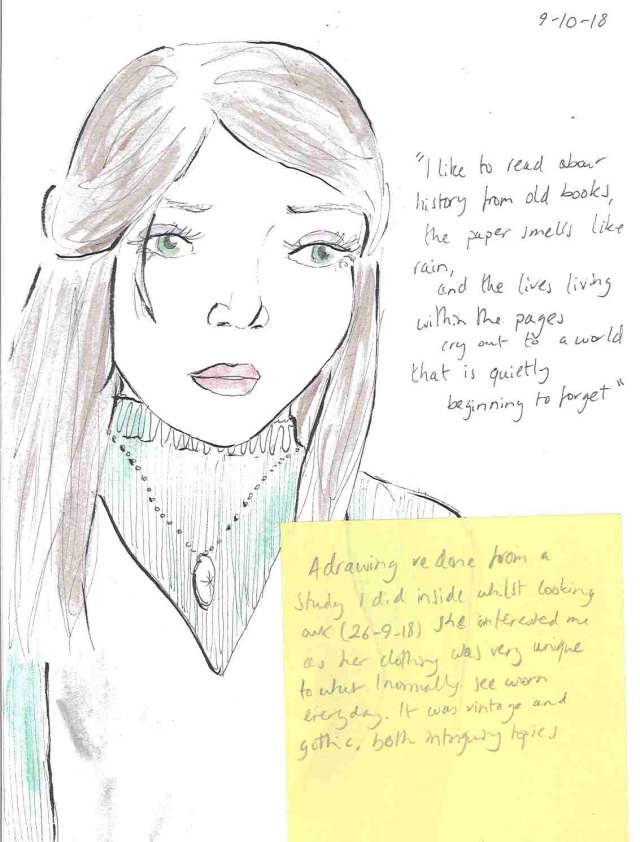A couple of weeks ago a guest speaker had came to visit the illustration room, with a plan and task sheet in hand. These tasks consisted of content created to aid the further research of the documentary project, and mine was on theatre at the time. Actually, without this guest speaker I would not have changed my subject so quickly to the café if it weren’t for his challenging questions.
The task sheet made us think about the project from different perspectives, this included a journalist, activist, statistician and historian. It was an interesting angle, but also not the easiest as I never thought of seeing it from the point of view as anyone else, so I got to work.
Firstly I began with some tester pieces which exercised my research skills and my outcomes from that. This helped me get a rough idea of what I will do for the actual pieces for the task, as I got to experiment with technique, layout and also the type of research of was going to carry out.
After having done the preparation work I then moved onto the actual presentations of each point of perspective.
For the historian I chose to look into Starbucks former CEO, Howard Schultz. I thought it would be helpful for my research into cafés as Schultz joined Starbucks back in the mid 80’s, he helped make what Starbucks is today, with his trip to Italy he got to experience cafés like nothing he had ever seen before. In Italy Schultz had witnessed the connection between barista and customer and the importance of that when it comes to making the specific coffee for them. He had taken Starbucks and turned it into one of the world’s most popular brands. With this new-found research I created an illustration piece to express my findings. The piece I had created for this theme was a fun approach to expressing the research as it involved Schultz with a speech bubble explaining his first trip to Italy, there is nothing too lengthy in the writing involved and the colours are subtle and reflect a memory or recollection as it’s main colours are brown and black.
[Image below contains the historian piece which was made with inks, watercolour and brown paper]
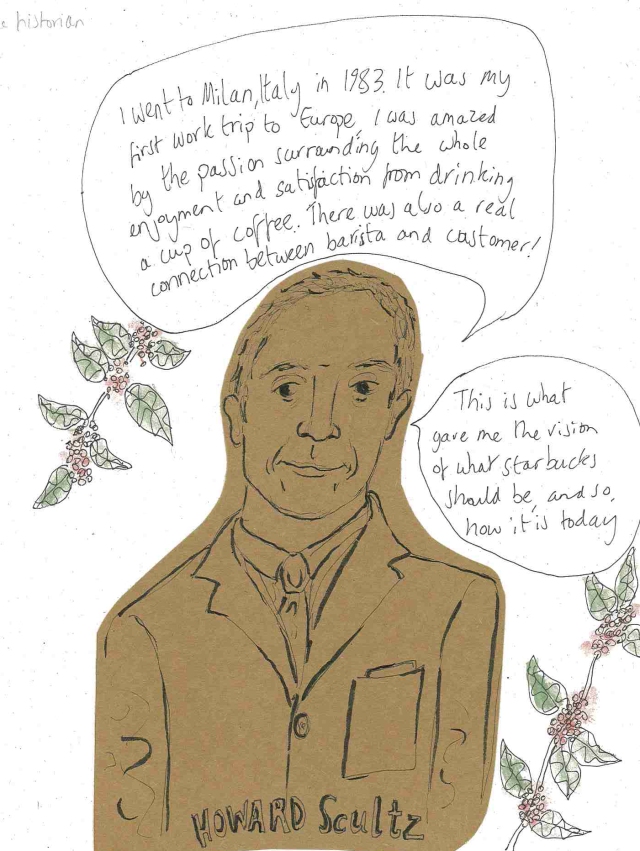
Next for the journalist point of view, I decided to create an article on why go like to buy food and drinks in cafés that we may have previously never intended to do. I challenged the idea of using persuasive descriptions of products, such as the ‘luxury chocolate cake’, or the ‘carmelised pecan muffin’, it all sounds very appealing and something we have never heard of before and so feel privileged and special to have the chance to eat such delicacies. I am happy with the outcome of the piece as the detailed drawings contrast with the type, I also used a little collage by sticking some words I had found in magazines that I thought made it appear interesting and gave it more of a variety in aspects to look at.
[Image below contains the journalist piece. This was made using ink, watercolours, brown card and gold 3D paint]
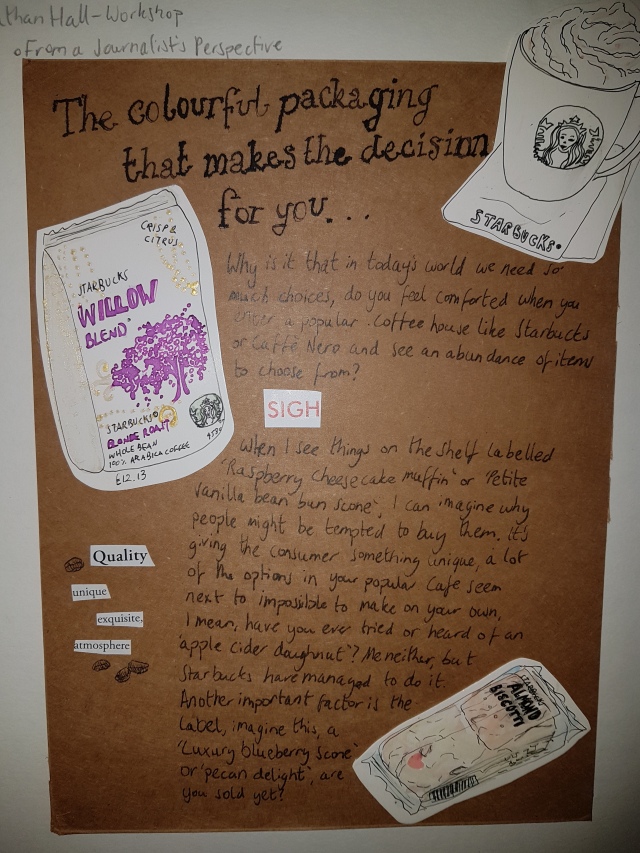
With the role of the activist I decided to look into the eco side of things, often we go to a café and never think about what this may do to the environment. It was an interesting find, beforehand I hadn’t gave it much thought but the amount of waste in cafés is at an obscene number. I focused on the takeaway cups we often leave with to go on about our days, despite the cup being made of paper, there is polythylene lined within the make-up of these innocent coffee holders, it prevents the cup from getting soggy from a rainy day and also unfortunately, from being recycled. The outcome for this research I believe worked well as it’s simple yet effective. The image consists of mainly facts but aslo a small diagram of the coffee cup to present the parts of the cup that contains plastic. I also tried to make the piece vocal and bold with the words in order to communicate an in-your-face message.
[Image below contains an activists point of view, this was created with sugar paper, brown card and a sharpie]
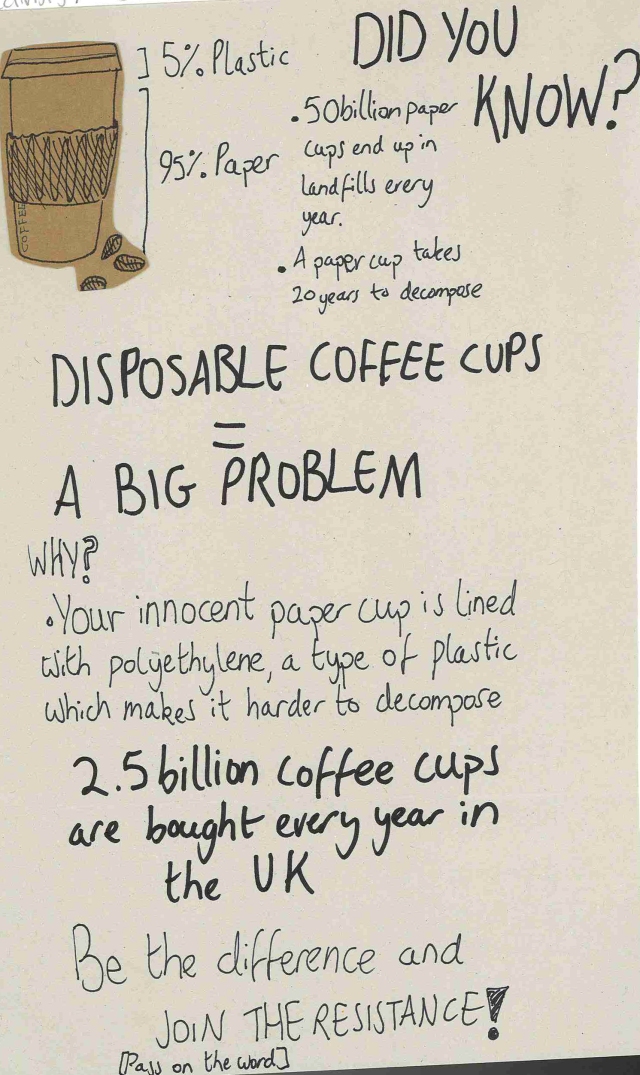
The last point of perspective was of the statistician, which at first I was quite unsure of how I could apply that to a café. I thought of looking into what may be the most popular drink bought in the UK, and then of which café is most visited, I chose the latter. From a blog I had found online she had rated three cafés from the best to the less vistited, the first was Caffe Nero, second Costa and third Starbucks.
I completed this piece by drawing café establishments over the top of relaxing images with fine liner and stating the reasons as to why they were where they were in the ranks, along with a quotation from the blog. I admit this piece could have been done better when it comes to presentation, it could have been neater and better laid out, however despite this I like the drawings as it gives the piece an alternative look.
[Image below depicts three of the UK’s most popular cafés, the piece was made with cut-outs of scenery I deemed relaxing, with fine liner to draw the cafés and marker]
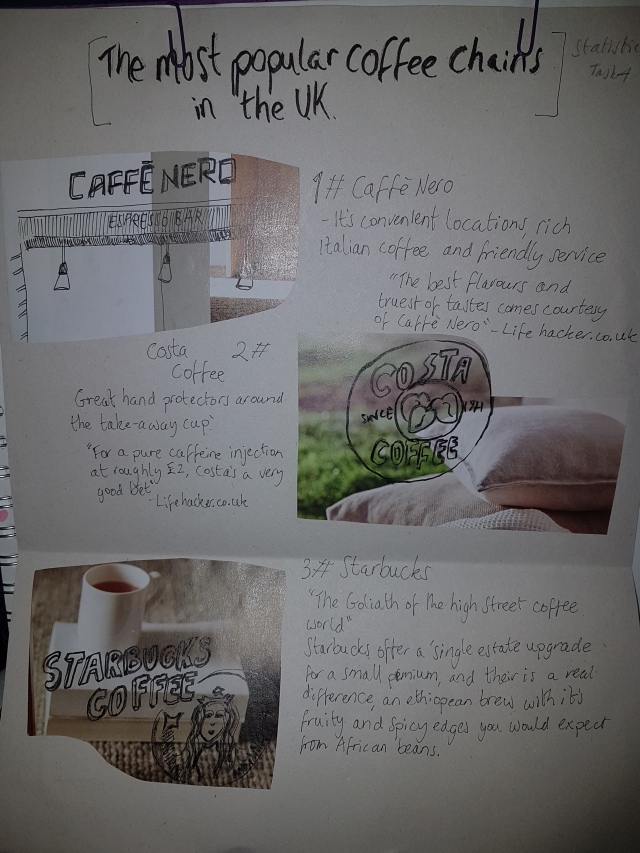
Overall I found this task very helpful as it challenged my way of thinking about my topic, it got me looking into alternate information that I would have before never looked into. This aided my research and perspective on cafés, and so would help me come to create my final piece for the project as I come to add information and opinions throughout the presentation of my documentation.





































































































